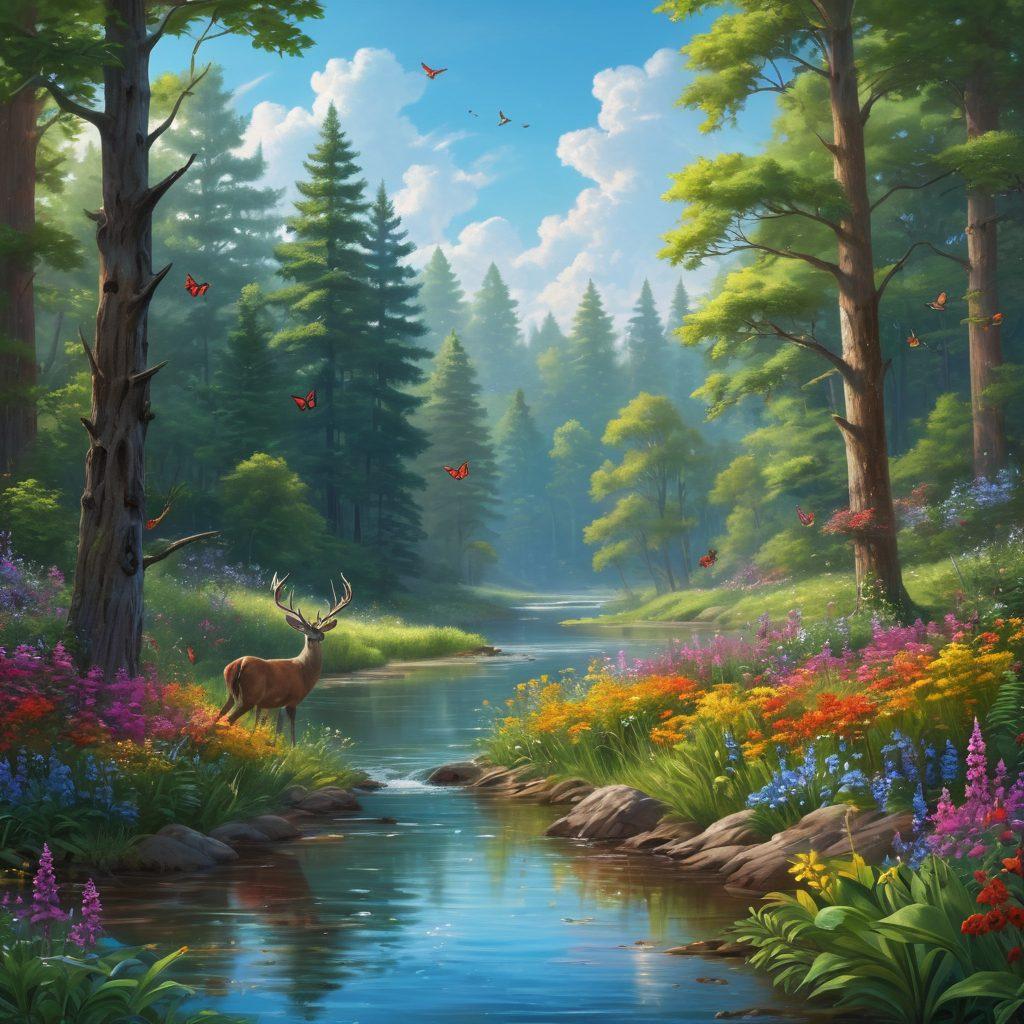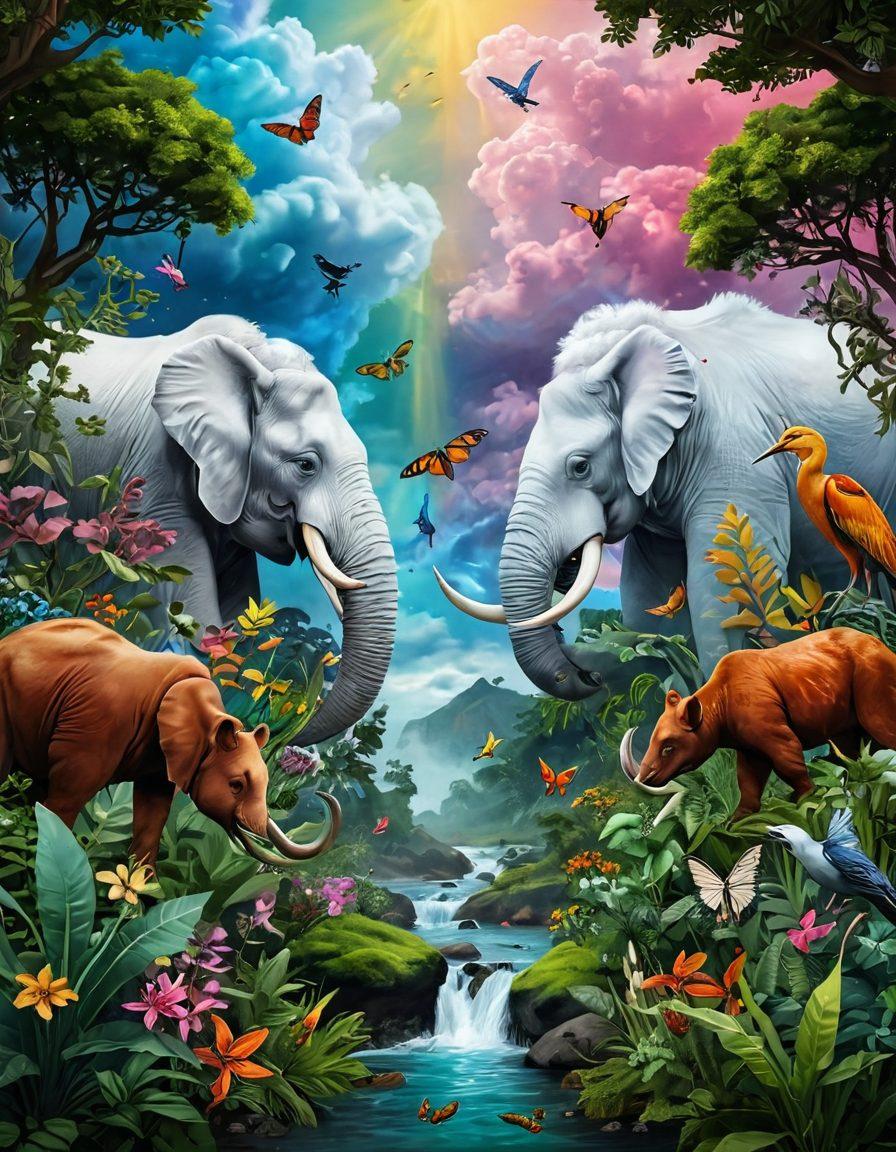Nature's Voices: Blogging for Biodiversity and Wildlife Conservation
In a world filled with relentless change and environmental distress, the voices of nature seem to whisper amidst the chaos. Imagine a vibrant forest, alive with the rustle of leaves and the calls of distant wildlife. Now imagine if we could harness the power of our voices to amplify these calls, to advocate for the flora and fauna that share our planet. This is the essence of blogging in wildlife conservation, where every word penned down serves as a beacon of hope for biodiversity, a reminder of the urgent need for habitat conservation, and a call to action for environmental protection.
Blogging, in essence, becomes an online journal where passionate individuals share their experiences, knowledge, and findings regarding various endangered species. With the International Union for Conservation of Nature (IUCN) tirelessly documenting red list species, bloggers can take it a step further by connecting readers with heart-touching stories. These can inspire action and awareness about species at risk and their critical habitats. Have you ever stumbled upon a blog detailing the plight of the Sumatran tiger or the enchanting but endangered Hawaiian ‘Ohia tree? Such narratives can transform statistical data into emotional appeals that resonate with readers, compelling them to make a difference.
But why should we care about blogging for wildlife conservation? It's because every story shared is a stepping stone to greater awareness. Blogs not only serve as informative platforms but also foster community engagement. They encourage enthusiastic individuals to join the conversation about biodiversity conservation. When readers engage with these posts, they don’t just absorb knowledge; they are motivated to act, whether through local conservation efforts, advocacy, or even simple acts like reducing their environmental footprint. The more we share, the more voices we have advocating for ecological balance and sustainability.
Consider this: the ecological threats faced by our planet require a collective response. Each blog post adds to the chorus for nature protection, creating a network of advocates from all walks of life. From spotlighting local conservation research to shedding light on global initiatives that protect species diversity, blogging becomes a tool for elevating the underrepresented voices of the natural world. By weaving storytelling into factual reporting, bloggers can spark curiosity, provoke thought, and foster a deeper understanding of the vital role each species plays in the ecosystem, thus ensuring we secure our planet's health for future generations.
The next time you read a captivating blog post about wildlife, think about the influence you can wield. Whether you love sharing your thoughts on social media or managing a detailed blog about your adventures in the wild, your voice holds power. By participating in online discussions about wildlife conservation, you not only amplify nature's voices, you become a part of the solution. So, what are you waiting for? Pick up that pen, or for modern-day enthusiasts, your keyboard, and share your passion for the biodiversity that surrounds us. Let’s ensure that the echoes of nature are heard far and wide, driving forward essential action for habitat conservation and environmental protection.
From Red List to Rescue: How Online Journals Foster Biodiversity Awareness
Imagine strolling through a lush forest, the vibrant colors of flora and fauna surrounding you. Each leaf and creature plays a critical role in the tapestry of life. But what happens when these elements of biodiversity come under threat? This is where blogging becomes a powerful tool for wildlife conservation, igniting awareness and advocacy for species at risk as listed by the IUCN, or the International Union for Conservation of Nature. These online journals not only tell compelling stories but also connect people with the urgent need for environmental protection. So, how do we turn the spotlight on these red list species and inspire action for habitat conservation?
Every person has a story, and so does every species. Take the story of the Amur Leopard, a magnificent creature on the brink of extinction. By sharing its plight through blogging, we can draw attention to the incredible challenges faced by many threatened species. When we share captivating narratives about specific red list species, we engage our readers emotionally, prompting them to think critically about the interconnections between species diversity and ecological balance. Every post can serve not just as information, but as a call to action—inviting readers to become involved in biodiversity conservation initiatives.
Blogs can bridge the gap between science and the public, transforming complex conservation research into accessible and engaging formats. By weaving intriguing visuals and relatable content into online journals, writers can demystify issues like habitat loss and identify practical steps individuals can take for sustainability. For instance, encouraging readers to volunteer for local wildlife research or participate in restoration projects can lead to significant contributions toward ecosystem preservation. Each blog post can plant a seed of inspiration and empowerment, nudging readers to have an impact on nature protection.
Quotes can encapsulate powerful sentiments about biodiversity and conservation. As David Attenborough once said, "The truth is: the natural world is changing and we are totally dependent on that world. It provides our food, water, and the energy we need to live. The understanding of how to conserve and protect it is vital for our survival." When we share such quotes in our blogs, it aids in framing the conversation around the importance of wildlife conservation efforts and the responsibilities that come with it. How can we, as individuals, echo these sentiments in our daily lives?
Ultimately, online journals focused on biodiversity foster a community of passionate advocates. Every post represents a gathering of voices that resonate with a collective mission: to protect our planet's rich and diversified life forms. Each time we hit publish, we share knowledge, ignite conversations, and encourage readers to think beyond themselves. It is these moments that inspire the hearts and minds of many to become proactive stewards of our environment. So, fellow bloggers, how will you utilize your platform in the quest for wildlife conservation and habitat protection?
Exploring the Ecological Impact: Blogging as a Tool for Habitat and Species Preservation
Have you ever gazed at a majestic eagle soaring through the sky or marveled at the delicate patterns of a butterfly's wings? Such moments remind us that we share this planet with an astonishing array of species. In a world teetering on the brink of ecological disaster, effectively conveying the importance of biodiversity conservation has never been more crucial. Blogging, as an online journal, has emerged as a powerful tool for habitat and species preservation. It offers passionate nature advocates a platform to raise awareness about the plight of threatened species and engage a community committed to wildlife conservation. Are you ready to embark on this compelling journey with us?
Imagine flipping through the pages of a captivating blog that doesn't just entertain, but educates. Each post can become a voice for the voiceless—the species at risk of disappearing forever. The International Union for Conservation of Nature (IUCN) maintains a Red List that tracks the status of various species, shining a spotlight on those that are threatened. By blogging about these red list species, we can craft stories that resonate, evoke emotions, and compel readers to take action. Words have the power to bridge the gap between humans and nature, igniting a passion for environmental protection that may otherwise remain dormant. How can your stories inspire change?
Every piece of content we produce today has the power to shape tomorrow's ecological balance. Blogging about biodiversity conservation isn't just useful—it's necessary. Each shared photo, pressed flower, or heartfelt tale not only showcases the beauty of our planet's flora and fauna; it educates your audience about the importance of ecosystem preservation. It's like creating a virtual field guide that encourages readers to explore their backyards and discover the wondrous creatures that call it home. When we weave storytelling into our posts, we invite readers to connect, learn, and act. Consider this: how can sharing a single experience with nature inspire a collective effort toward sustainability?
While the intricacies of wildlife research can often feel distant and complicated, the language of blogging makes it accessible. Use your platform to simplify complex concepts, break down the statistics about species diversity, and highlight the urgent need for habitat conservation. By sharing actionable insights—like how to support local conservation initiatives or participate in citizen science projects—you empower your readers to take tangible steps toward creating a more sustainable future. After all, who doesn't want to be part of something bigger? What will your contribution to this cause be?
As we navigate this digital age, it's essential to remember that every blog post can make a difference. The impact of blogging on wildlife conservation is profound; it fosters connections, cultivates community, and mobilizes support for crucial initiatives. As we collectively strive for harmony between humanity and nature, let us remember the delicate dance of ecological balance that we must preserve. By raising your voice through blogging, you wield the power to advocate for those who cannot. Together, we can inspire others, create lasting change, and protect the splendid biodiversity that graces our planet. Will you help us in telling this vital story?


